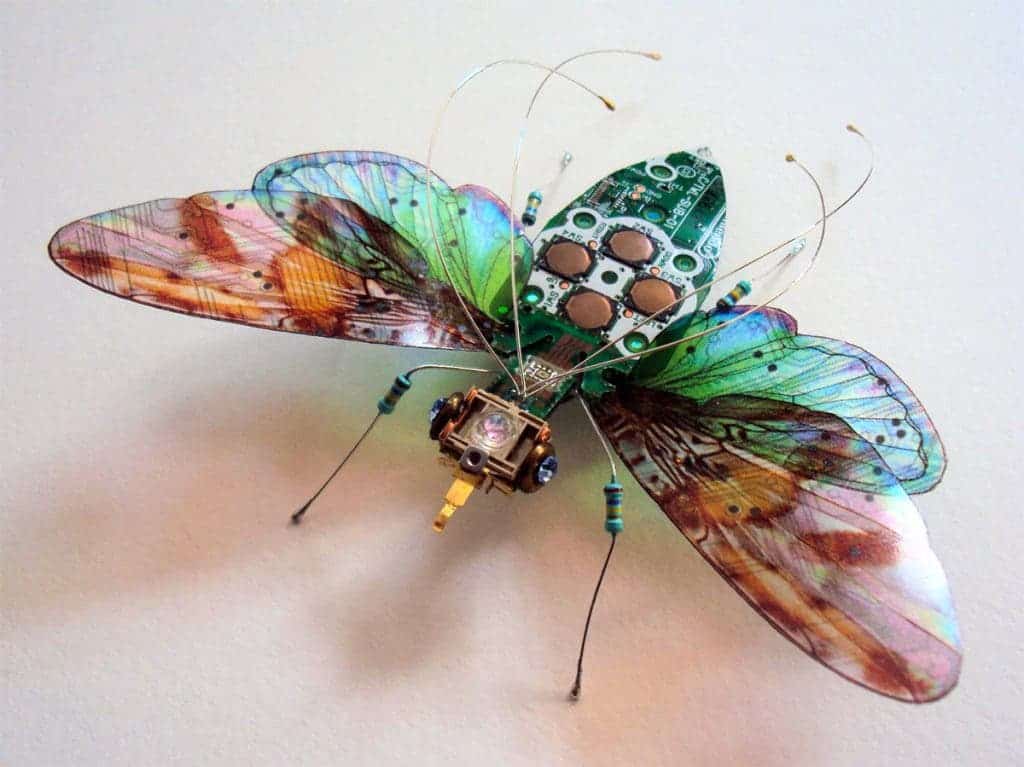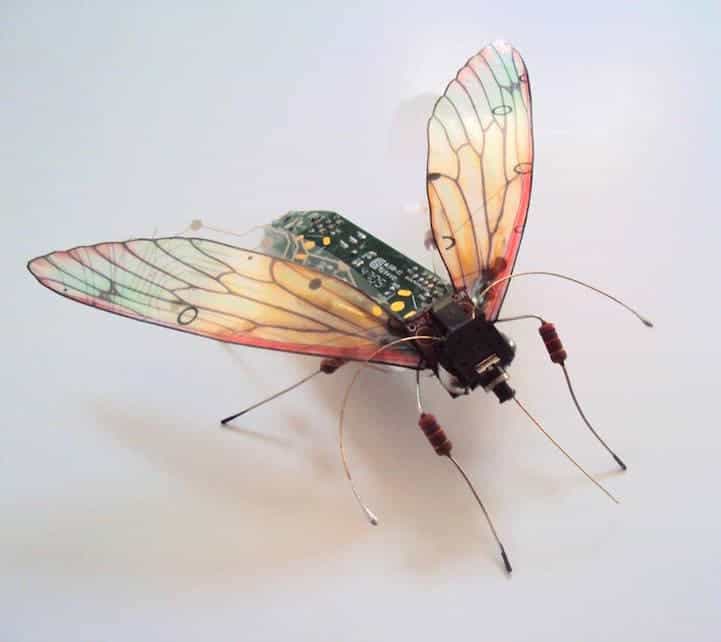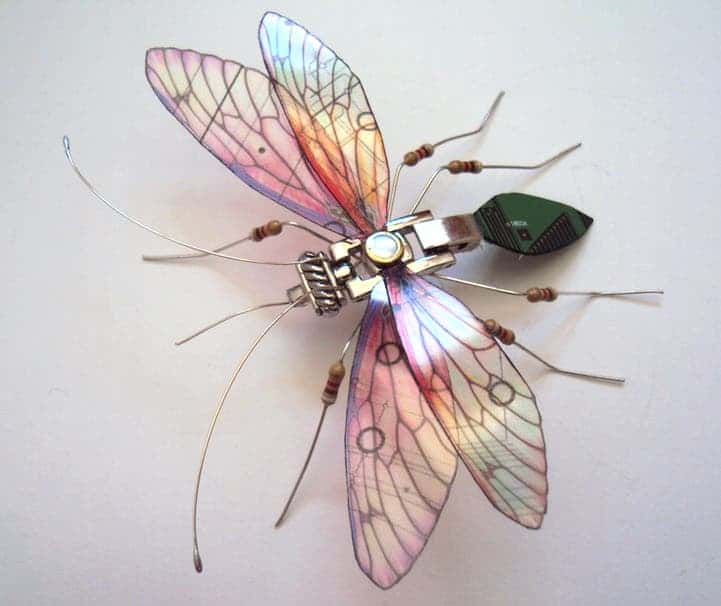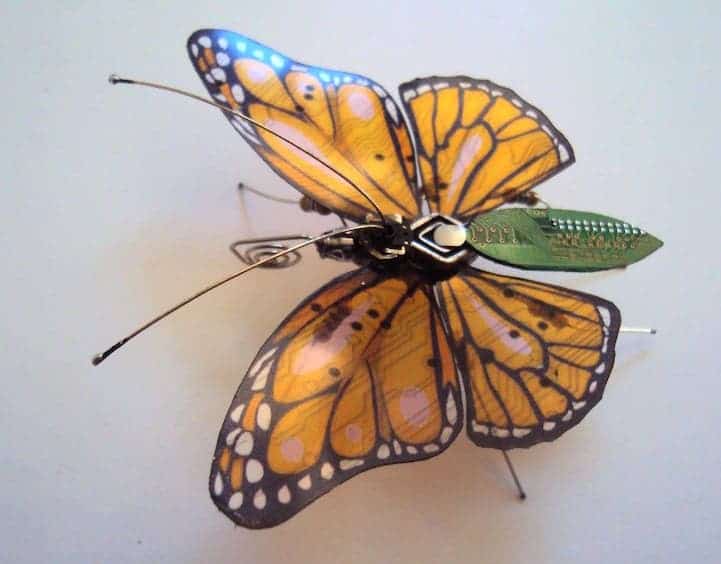I just love it when stuff that’s thrown away becomes a part of something new and valuable – upcycling, as many people call it. For UK-based artist Julie Alice Chappell (Facebook), it’s about turning technology into art. She takes thrown away computer and video game parts and assembles them into pieces of art, which she then sells on Etsy.
“The recycled bits of cultural refuse that are woven throughout my work represent a direct encounter with the excesses of modern living highlighting the dangers of planned obsolescence and e-waste in the environment. The work displays an aesthetic beauty whilst offering a socio-political discourse, attempting to reclaim waste and the destruction of the natural world, in the beauty of visual art.”
But this is not the only type of art she does, as I found out from her website. Her “pieces incorporate modes of display and the containment of nature, borrowed from the Victorian diorama, scientific musiology and modern, Contemporary framing”.
Via My Modern Met.














